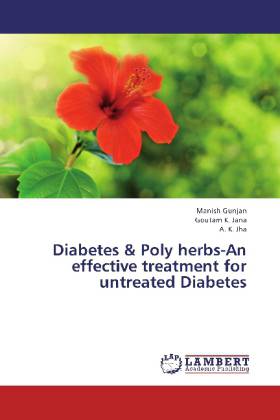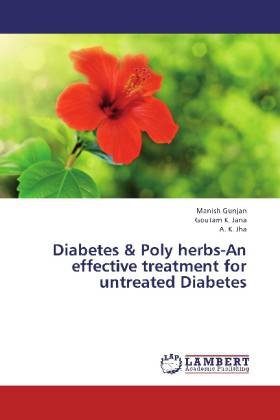
- Afhalen na 1 uur in een winkel met voorraad
- Gratis thuislevering in België vanaf € 30
- Ruim aanbod met 7 miljoen producten
- Afhalen na 1 uur in een winkel met voorraad
- Gratis thuislevering in België vanaf € 30
- Ruim aanbod met 7 miljoen producten
Zoeken
Diabetes & Poly herbs-An effective treatment for untreated Diabetes
Manish Gunjan, Goutam K. Jana, A. K. Jha
Paperback | Engels
€ 75,45
+ 150 punten
Omschrijving
The global pharmaceutical market was worth US $550 billion in 2004 and is exceeded around US $1100 billion in year 2010. The herbal industry shares about US $100 billion with good growth potential. The World Bank report trade in medicinal plants, botanical drugs products and raw materials is growing at annual growth rate of about 15% (WHO).Since ancient times, plants have been an exemplary source of medicine. Ayurveda and other Indian literature mention the use of plants in treatment of various human ailments. Research conducted in last few decades on plants mentioned in ancient literature or used traditionally for diabetes have shown anti-diabetic property. Natural products compounds discovered from medicinal plants (and their analogues there of) have provided nnumerous clinically useful drugs and still remain as an essential component in the search for new medicines. So, these traditionally used plants can be exploited effectively in order to find New Chemical Entity for treatment of diabetes.
Specificaties
Betrokkenen
- Auteur(s):
- Uitgeverij:
Inhoud
- Aantal bladzijden:
- 156
- Taal:
- Engels
Eigenschappen
- Productcode (EAN):
- 9783843391573
- Verschijningsdatum:
- 2/12/2012
- Uitvoering:
- Paperback
- Afmetingen:
- 150 mm x 220 mm
- Gewicht:
- 236 g

Alleen bij Standaard Boekhandel
+ 150 punten op je klantenkaart van Standaard Boekhandel
Beoordelingen
We publiceren alleen reviews die voldoen aan de voorwaarden voor reviews. Bekijk onze voorwaarden voor reviews.








